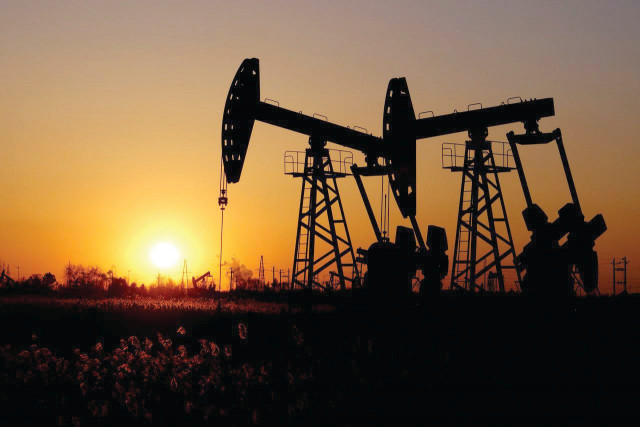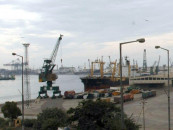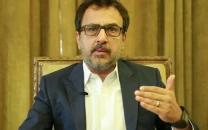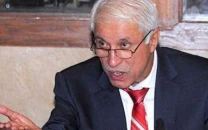Energy security: some suggestions
High-profile advisory council comprising energy professionals should be set up

Energy security appears to be the biggest challenge confronting the country since long. The following paragraphs are an attempt at a quick health check of Pakistan’s energy supply chain and recommending the way forward.
Despite all of our cash flow issues and heavy debt, we have somehow ended up with a highly lethal energy mix which compels us to spend around $16 billion on fuel imports annually. The main reason is that during the past more than 40 years, instead of considering a long-term strategy and its execution, we have mostly reacted to crisis.
A few examples are failure to build any major dam after Tarbela Dam in 1976 and Thar coal taking decades to commence its monetisation – though its effective utilisation could substantially increase the reserve life of oil and gas.
Similarly, despite negligible progress on gas reserve replacement, we continued to use it liberally. The optimal use of indigenous resources could help in delaying the import of expensive liquefied natural gas (LNG). The replacement of oil and gas reserves requires a sustained focus on the exploration and production (E&P) activity. We instead have not been very consistent in this regard.
Hardly 35% of the country has so far been explored with the last major hydrocarbon discovery in 2002 in Tal block.
Lack of interest by most of the E&P MNCs for the past 15-20 years adds to the challenge. Pakistan has a rich past with respect to the presence of MNCs such as UTP, BP, Occidental, BHP, Tullow, OMV, Premier, BG, etc. Only a few such as MOL, PGNiG, UEP and Eni are still active in Pakistan.
In addition to E&P, the MNCs contribute to imparting modern knowledge and skills to the country’s professionals who serve as employees or interact with expatriates in joint ventures and other forums like PPEPCA.
This, in conjunction with other factors, went a long way towards maintaining excellence at high levels in the E&P industry for a long time. However, the gradual exit of MNCs is causing a marked dent in the entire process.
Challenges of midstream and downstream industries have also increased with time. Unaccounted-for-gas (UFG) and associated losses stood at 358 million cubic feet per day (mmcfd) in FY19, ie equivalent to sales of a large gas field.
Similarly, the LNG supply chain, still in its infancy, has started throwing up unique challenges including sometimes even impacting supplies from our own fields.
We have not so far been able to achieve the refining capacity as per requirement, thus compelling us to meet at least 45% of requirement for petroleum products (20 million tons per year) through imports.
The transmission infrastructure for oil and petroleum products also needs augmentation. It goes without saying that the planned addition of Machike to the Taru Jabba pipeline (initially conceived in 2000) is an apt step in that direction. Appropriate solutions to indigenous crude oil transportation are required.
A number of countries having dearth of oil and gas have made huge investments in E&P abroad to augment their energy security. However, we are far behind in that direction as well as in establishing strategic underground oil and gas reserves.
The above observations indicate that at least some aspects of the country’s energy supply chain need more focus.
India and Bangladesh
Both countries appear to be galloping towards their energy goals. ONGC of India has targets to double its gas production by 2040. It drills more than 500 wells a year with 50 offshore wells. Pakistan hardly drills 80 wells per year. ONGC has assets outside India in 17 countries contributing 200,000 barrels of oil equivalent per day. Oil India is active in 10 countries.
India has plans to invest $100 billion in oil and gas infrastructure by 2024. With 23 large refineries, it has refining capacity of 257 million tons per year, which generates annual revenue of $35 billion from the export of petroleum products. Also, it has three underground oil storages.
Bangladesh’s gas production has gone up from 1,744 mmcfd in 2009 to 2,700 mmcfd and the aggregate supply including re-gasified LNG is 3,250 mmcfd.
It established a robust LNG supply chain in less than three years, ie two terminals each of 500 mmcfd, supply contracts and transmission capacity, while further expansion is in progress.
Bangladesh has especially done wonders in electricity generation and transmission. It increased generation capacity four times from 5,000 megawatts in 2009 to 21,000MW by 2019 and targets to reach 60,000MW by 2040.
What is to be done?
Until the above situation is dealt with in a holistic manner with a long-term plan and a dedicated team capable of supporting implementation of such a plan, “fire-fighting” may continue to consume most of our time and resources.
Therefore, a state of energy emergency is required to be declared immediately along with the constitution of a high-profile advisory council comprising world-class energy professionals (engineers, geoscientists, etc) who have managed large value chains. Some immediate tasks of the advisory council can be as follows:
First, conduct an integrated review of the oil and gas supply chain gaps, along with a concomitant study of power supply issues and options (including coal), develop remedial plans and support their implementation.
Second, make baseline capacity assessments of relevant components, including the governance and institutional framework, of supply chains and corresponding catch-up plans, and support their implementation.
Some international references such as that of Norway, South Korea, Singapore, China, etc may come in handy in this homework. Third, approach all E&P MNCs which are still in Pakistan or have left and ascertain their candid feedback with respect to what can/could retain them.
Fourth, nurture a culture of professionalism. We have no future without fulfilling this essential requirement. This requires capacity gap mapping of human capital requirements and focused capacity-building plans including opportunities for the exposure of professionals to international systems and corporate environments.
A number of countries such as Singapore, South Korea and China are examples of the progress possible in short periods by investing in human resources. Advisory councils have played a vital role in expeditious development of a number of modern economies. Therefore, there is no reason for its failure in Pakistan.
The above suggestions assume critical urgency because 64% of Pakistan’s population is between 18 and 30 years of age. Also, the ratio is projected to stay the same for the next 20 years.
Therefore, it is imperative to respond to the needs of the youth bulge with the fastest possible socio-economic development which, of course, necessitates a robust energy supply chain.
The writer is a petroleum engineer and an oil and gas management professional
Published in The Express Tribune, February 22nd, 2021.
Like Business on Facebook, follow @TribuneBiz on Twitter to stay informed and join in the conversation.


















COMMENTS
Comments are moderated and generally will be posted if they are on-topic and not abusive.
For more information, please see our Comments FAQ